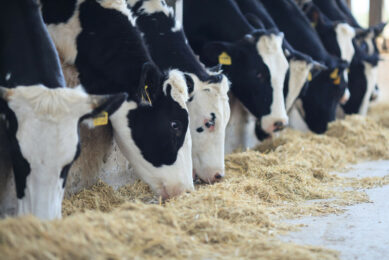Antibiotics in fish feed
The use of antibiotics in livestock diets has been controversial for as long as I can remember. Now that controversy has spread to aquaculture diets. You wouldn’t have to be Einstein to work out that continual use of even low levels of antibiotics will build up pathogenic resistance. After all, the reverse applies. Recovery from and/or exposure to any given disease is how immune systems – ours included – have developed.
So is all the commotion justified? Really, all we’re doing is artificially protecting our farm animals? That’s right – artificially protecting. In a much more leisurely world, one in which evolution muddled along at a millennium pace, famine and pestilence would have saved the blessed and consigned the unlucky to oblivion. Now with population growth on full throttle we have forfeited the luxury of a Nature Approved process of disease control.
Is the concern that the continual use of low levels of antibiotics is going to build up immunity in the very diseases we’re trying to keep at bay?
I’ll be amongst the first to argue that there’s a distinct possibility that we’re overusing antibiotics in our feeds. So why do we use them? And what choices do we have?
Maximising productivity
Firstly, antibiotics promote better growth because they generate better all round health in crowded conditions. Their use maximizes productivity and efficiency. To cut back on the former we would cutting back on the animal protein supply to the global food pool. To cut back on the latter would be to outprice the same to a large proportion of the economically challenged citizens with whom we share the planet.
The options? The use of pro-biotics has had positive, albeit limited benefit, so I guess the only serious scientific option available is to target the strains of bacteria that are causing the problems in the particular species and rigorously monitor fish health. We don’t want to wake up one morning to find our animal protein industries suffering massive disease outbreaks from a resistant strain of ‘superbug’ and any semblance of a global food security policy in tatters?
And with the global media scrambling to sell attention grabbing content and the ever-watchful social media broadcasters trumpeting their anxieties and doctrines, how, as an industry, can we live up to our responsibilities and make sure that some ‘superbug’ doesn’t slip under our radar? Apart from exposing us – as an industry – to universal derision, think of the universal disgrace.
Controlled systems
One way is to make sure our production systems are rigidly quarantined. In other words – thorough protocols and internal, and where necessary, policed regulatory controls. The more sophisticated pig producers are doing this, as are some aquaculture sectors. Environment conscious Malaysia for instance has adopted a policy of moving towards antibiotic free production using controlled aquaculture systems (CAS) to produce jade perch and barramundi from SPF seedstock.
Taking a broader perspective of the matter, there’s every evidence that disease wasn’t an issue until we gained the insight to knowledge. From the moment we changed the game plan – gave up the healthy outdoor life and took to farming and a sedentary (as in settled) life style – we have had to keep one step ahead of the game.
Breeding disease
One of my early fish health management teachers used to catch our attention by stating that ‘aquaculture breeds disease’. What he meant was that as soon as you domesticate and crowd an animal – as in intensive animal protein production systems – in this case a fish farm – you increase the likelihood of a disease outbreak a trillionfold. So let’s accept that antibiotics are a part of modern living on a planet designed for the maximum comfort of around two to three billion people at max that is now home to seven billion and counting.
True, the profit motive is likely to be driving a good part of the agenda here. And having been involved in an investigation into the subtle but devastating impact on the environment and the aquaculture industry of agricultural chemicals I’m as deeply suspicious of status quo driven regulators and the big end of town as the next man or woman. (Google Sunland two headed fish and see what you turn up)
But I guess the bottom line is that we’re on a tread mill of our own making and we’re finding we have to peddle harder and harder because if we don’t we’ll fall off. How we gear that treadmill is crucial to our survival and that of the planet we’ve been bequeathed. So until we come up with something better, it looks as though we’re going to have to live with antibiotics – and manage them holistically, honestly and precisely.











